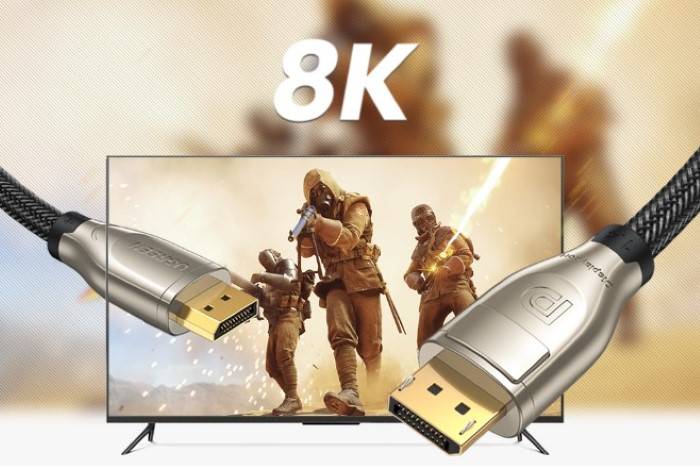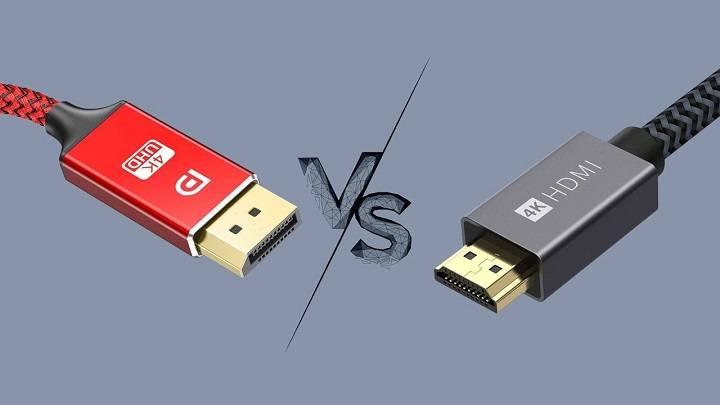In the world of gaming, every detail matters. From the graphics card to the monitor, gamers are constantly seeking ways to optimize their experience for maximum immersion and performance. Two common display interfaces, DisplayPort and HDMI, play a pivotal role in this pursuit. Understanding the differences between them is crucial for gamers looking to make informed decisions when setting up their gaming rigs. In this comprehensive guide, we’ll delve into the intricacies of DisplayPort vs. HDMI for gaming, covering everything from technical specifications to real-world performance.
Understanding DisplayPort

- DisplayPort, developed by VESA (Video Electronics Standards Association), is a digital display interface primarily used to connect a video source to a display device, such as a monitor or television.
- It supports higher resolutions, refresh rates, and color depths compared to its predecessors like VGA and DVI.
- DisplayPort cables come in different versions, with each iteration bringing improvements in bandwidth and features. The latest version, DisplayPort 2.0, offers significant enhancements over its predecessors, including support for 8K resolution and beyond.
- One of the key features of DisplayPort is its support for Adaptive Sync technology, which helps reduce screen tearing and stuttering during gameplay, providing a smoother gaming experience.
Exploring HDMI
- HDMI (High-Definition Multimedia Interface) is another popular digital display interface widely used in consumer electronics, including TVs, monitors, and gaming consoles.
- It is capable of transmitting high-definition audio and video signals through a single cable, making it convenient for connecting various multimedia devices.
- Similar to DisplayPort, HDMI has evolved over the years, with newer versions offering increased bandwidth and support for advanced features such as HDR (High Dynamic Range) and Variable Refresh Rate (VRR).
- HDMI 2.1 is the latest iteration of the HDMI standard, boasting impressive capabilities like support for 10K resolution, higher refresh rates, and enhanced gaming features like ALLM (Auto Low Latency Mode) and QFT (Quick Frame Transport).
Bandwidth and Resolution
- DisplayPort has traditionally offered higher bandwidth than HDMI, allowing for greater resolution and refresh rate support. However, with the introduction of HDMI 2.1, the gap has narrowed significantly.
- DisplayPort 1.4 supports a maximum resolution of 8K at 60Hz or 4K at 144Hz, while HDMI 2.1 can handle resolutions up to 10K at 120Hz, offering slightly better performance in terms of sheer pixel-pushing power.
- For most gamers, both interfaces are more than capable of delivering stunning visuals, but those pushing the boundaries of resolution and refresh rate may lean towards DisplayPort for its slightly higher ceiling.
Gaming Performance

- When it comes to gaming, both DisplayPort and HDMI offer excellent performance, with minimal differences in most scenarios.
- DisplayPort’s support for Adaptive Sync technology can be a game-changer for users with compatible monitors, as it helps eliminate tearing and stuttering without introducing significant input lag.
- HDMI 2.1’s gaming-centric features like ALLM and VRR are also noteworthy, catering to gamers who prioritize responsiveness and smooth gameplay.
- Ultimately, the choice between DisplayPort and HDMI for gaming may come down to factors such as monitor compatibility, available ports on your graphics card, and personal preference.
Compatibility and Availability
- HDMI enjoys broader support across various devices, including gaming consoles, Blu-ray players, and set-top boxes, making it a versatile choice for multimedia enthusiasts.
- DisplayPort, while less ubiquitous in consumer electronics, is widely adopted in the PC gaming community and is often the preferred choice for high-end gaming monitors and graphics cards.
- Many modern graphics cards come equipped with multiple DisplayPort and HDMI ports, offering users flexibility in connecting their displays based on their preferences and requirements.
Future Considerations
- As gaming technology continues to evolve, so too will the requirements for display interfaces.
- DisplayPort 2.0 and HDMI 2.1 lay the groundwork for future advancements in resolution, refresh rates, and gaming features, promising even more immersive gaming experiences for enthusiasts.
- Gamers should keep an eye on emerging technologies like VirtualLink, a USB Type-C-based interface designed specifically for virtual reality headsets, which could shape the landscape of gaming connectivity in the years to come.
Choosing between DisplayPort and HDMI for gaming ultimately depends on your specific needs and preferences. Both interfaces offer excellent performance and compatibility, with slight differences in features and capabilities. Whether you prioritize high resolutions, fast refresh rates, or advanced gaming features, understanding the nuances of DisplayPort vs. HDMI can help you make the right choice for your gaming setup. As technology continues to advance, gamers can look forward to even more exciting developments in display connectivity, further enhancing the immersive gaming experience.


